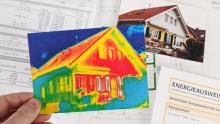Precision mechanical sensors are a fundamental part of modern technologies and are used to stabilise aeroplanes, predict earthquakes, deploy life-saving airbags, monitor the integrity of bridges, and even time computer processes. Despite being used almost universally, their precision is generally limited by the electronic circuits used to monitor them. The EU-funded cQOM project has been working on using light instead of electronics to monitor these sensors to significantly enhance precision and reliability.










